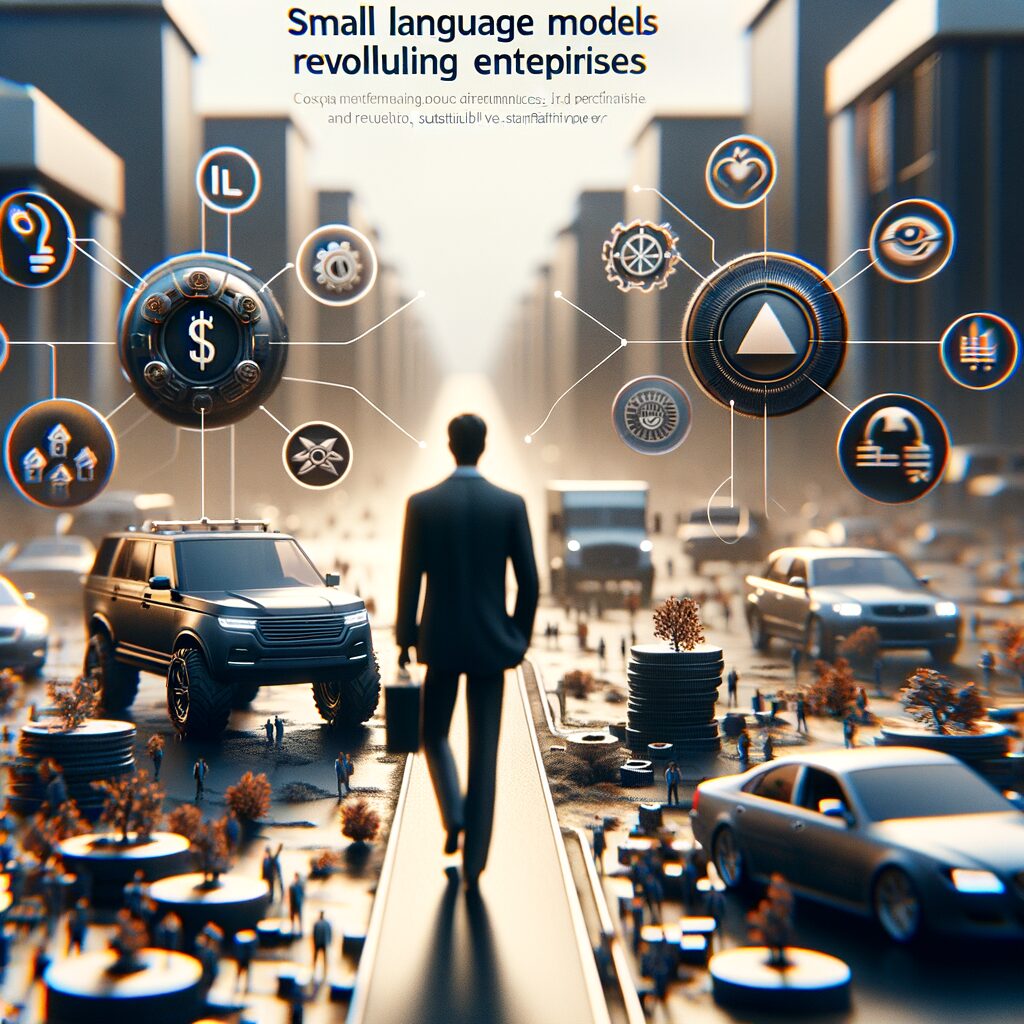Smaller Models, Bigger Value: Why SLMs Beat LLMs for Enterprises
In today’s rapidly evolving technological landscape, enterprises are looking for AI solutions that provide not only high performance but also cost efficiency and enhanced control. While Large Language Models (LLMs) often grab the spotlight, Small Language Models (SLMs) are emerging as a better fit for enterprise needs. This article explores how domain-specific AI, powered by SLMs, can offer secure and scalable solutions for businesses.
The Rise of Small Language Models in Enterprises
Why are more enterprises shifting their focus from LLMs to SLMs? The answer lies in the need for tailored solutions. Small Language Models are designed to be nimble, specifically trained for distinct domains or tasks. This specificity can significantly enhance efficiency and accuracy, which is crucial for corporate applications. For example, in highly regulated industries such as finance and healthcare, where data sensitivity and privacy are paramount, smaller models ensure that AI systems are deeply integrated into the domain, providing precise results.
SLMs also offer a strategic advantage in cost management. Consider this: while LLMs can require substantial computational resources and energy expenses, SLMs are typically less resource-intensive, offering a more sustainable approach. In applications like document summarization, where precision and speed are vital, a fine-tuned smaller model can dramatically reduce operational costs while maintaining high accuracy.
- Enhanced domain-specific performance
- Lower computational and financial overhead
- Increased data security and control
Isn’t it intriguing how such modest models can deliver such profound value? As businesses increasingly recognize the limitations of general-purpose LLMs, the tailored capabilities of SLMs become even more appealing.
SLMs in Action: Real Business Applications
To understand the practicality of SLMs, let’s look at real-world use cases. One notable application is in ticket triage, where SLMs are trained on customer service interactions, enabling companies to categorize and prioritize tickets effectively. This not only improves response times but also enhances customer satisfaction, crucial metrics for service-driven enterprises.
Another area where Small Language Models shine is system audits. In IT environments, accurate anomaly detection is essential. SLMs fine-tuned for specific IT landscapes can identify irregular patterns with higher reliability compared to their larger counterparts. By focusing narrowly on relevant data streams, organizations can anticipate issues and enact solutions with precision.
Additionally, SLMs play a pivotal role in document summarization. For enterprises dealing with large volumes of paperwork, maintaining efficiency while ensuring compliance can be challenging. Here, SLMs trained to understand particular business languages and compliance standards can automate summarizations, allowing for quick insights without compromising accuracy. Isn’t it remarkable how these small models can transform crucial business processes?
Challenges and Considerations of Implementing SLMs
While the benefits of Small Language Models are alluring, enterprises must navigate some considerations when adopting these technologies. One key challenge is the upfront task of model training and customization. Developing an SLM requires curating high-quality, domain-specific datasets, which can be both time-consuming and resource-intensive. However, the long-term benefits often outweigh these initial efforts.
Another consideration is the integration within existing systems. Enterprises must ensure that their IT architecture supports the implementation of SLMs without causing disruptions. Seamless integration requires collaboration between data scientists, IT teams, and domain experts. Thankfully, the scalable nature of SLMs typically facilitates smoother integration processes compared to larger models.
Moreover, businesses must recognize that while SLMs offer enhanced control and security, they are not a panacea. Continuous monitoring and iterative improvement are necessary to maintain their relevance and performance. How can enterprises ensure they leverage the full potential of SLMs? It begins with a commitment to investment in the right human and technological resources.
The Future of AI in Enterprises: A Smaller Yet Mightier Approach
As the AI landscape evolves, enterprises are discovering that opting for smaller, tailored models over larger, general-purpose systems can yield substantial benefits. Small Language Models not only provide enhanced data control and reduced expenses, but they also offer bespoke solutions aligned with specific business objectives.
Looking ahead, the continued development of SLMs promises to open new avenues for innovation across sectors. Whether in system audits, document processing, or customer service, the potential applications of SLMs are vast and varied. As businesses continue to embrace these technologies, the question remains: Have you considered the benefits of training your own small models? The answer could redefine your enterprise’s approach to AI.
In conclusion, Small Language Models present a compelling option for enterprises seeking efficient, secure, and cost-effective AI solutions. By focusing on domain specificity, SLMs offer a tailored approach that aligns with organizational goals and constraints. As companies explore these advantages, the potential for transformative change becomes both apparent and achievable.
Conclusion
As enterprises explore AI options, Small Language Models provide a perfect blend of efficiency, security, and cost-effectiveness. For companies within regulated industries, the precision and control of SLMs can prove invaluable. As we’ve seen through real-world applications like ticket triage and document summarization, SLMs can transform enterprise operations. Could your business benefit from the enhanced capabilities of small models? The opportunity awaits!

